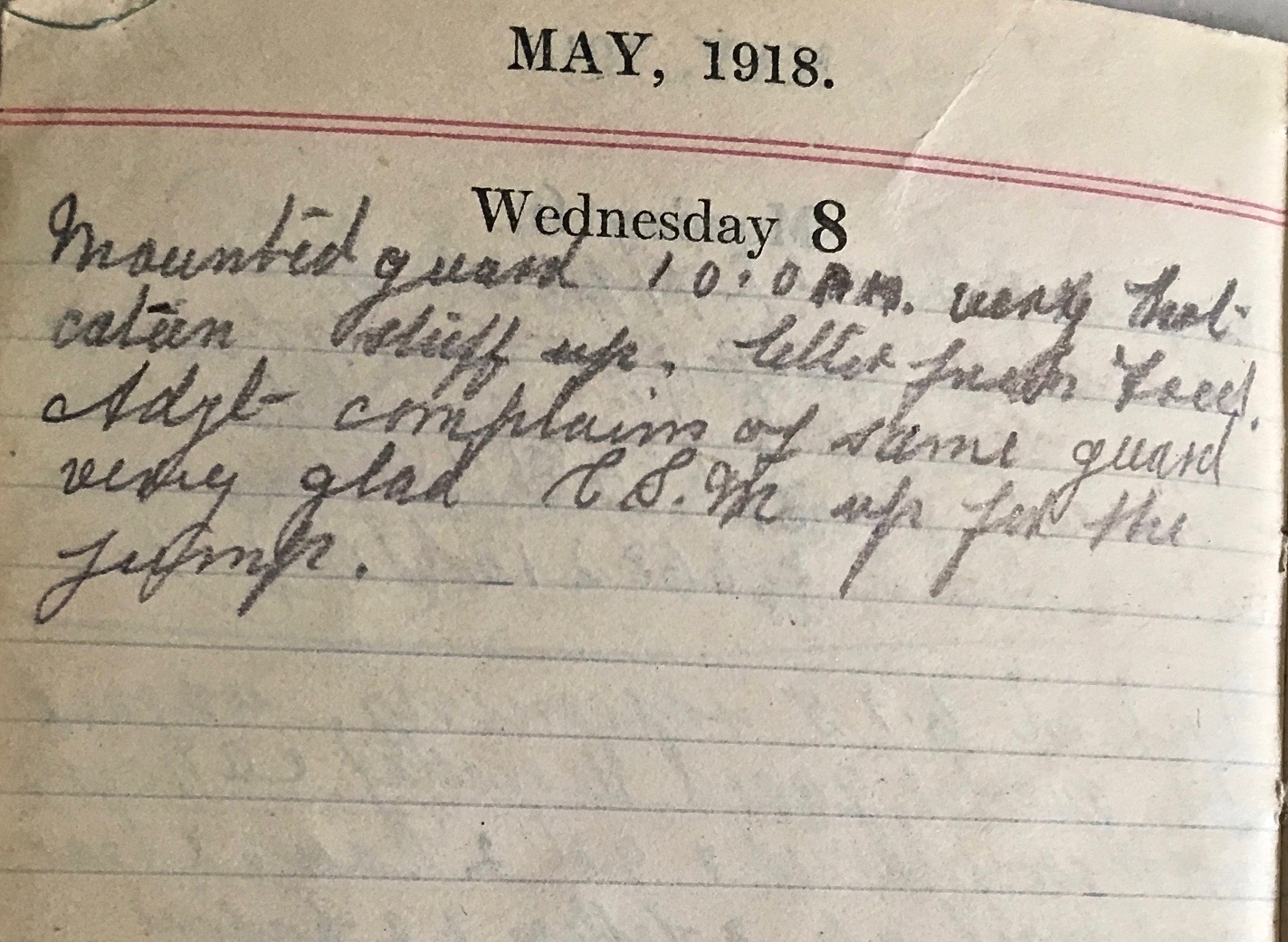Wednesday May 8th, 1918
Mounted guard 10am. Very hot. Canteen stuff up. Letter from Fred. Adjt complains of same guard – very glad. CSM up for the jump.
Mail & Provisions
Today Frank receives a letter from his brother-in-law, Fred Sutton. Fred is also serving with the British Salonika Force (BSF) but, so far, Frank hasn’t managed to meet up with him. Keeping in touch by mail is a good compromise. He is also delighted that the Battalion Canteen has received more provisions.
Both the mail and the supplies for the canteen will have been transported by either horses or mules.
Horses & Mules
For the last time in modern warfare, horses and mule were used extensively in WWI on all fronts and for the duration. The cavalry regiments of both sides played a part, albeit slightly different than that anticipated at the beginning of the war. However the greater and almost insatiable demand was to use them for transport – of weapons, munitions, stores, messages and people.

By the end of the war, the British Army owned over 230,000 mules and around 530,000 horses. They were often casualties, were sick or became lame and, by 1917, the Army needed 15,000 new animals a month to meet its needs. In the first months of the war, it requisitioned 165,000 across Britain. Later it would buy thousands from as far afield as the USA, New Zealand and South Africa.¹ The photograph shows the Italians landing mules at Salonika in October 1916.*
The effort and infrastructure required to keep the horses in good shape was significant. There were large veterinary teams in all locations, troops to care for them on a day-to-day basis and farriers and shoe smiths to keep them shod.
Feeding them was also a challenge, the ration per horse per day was 20 lbs of grain, almost a quarter less than they would have been fed at home. Illtyd Davies, while with B Battery, 100th Brigade RFA, had an interesting strategy to keep his horses well fed. ‘Whenever our team were detailed to haul forage from the divisional dump, we always managed to steal an extra bag of oats, consequently our six horses were always in good condition. Sometimes the officers would stand and look at our gun team, and discuss why the horses were in such good shape. We used to have a quiet laugh at some of the strange theories voiced by the officers. They only had to look at themselves for the answer. Like our horses, the officers were eating more and better grub than the men.’ ²
13th (Service) Battalion War Diary – 8th May 1918 – Saida
Companies are gradually completing anti-malarial work and are taking on work on Le Commandant and bringing all the RE working parties up too full strength as they do so.
References & Further Reading
¹ Horses and Mules in WWI on Spartacus
² ‘A Little Account’ (1914-1919) by Iltyd Davies (from a collection of the Salonika Campaign Society)
Horses in WWI on History Learning Site
* Q 32505, copyright Imperial War Museums


